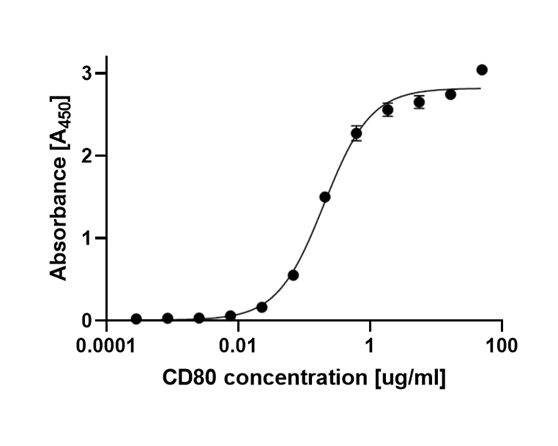| Alternative names | CD152 |
| Known ligands | CD80, CD86 |
| Origin | Homo sapiens |
| Accession number | P16410 |




Cytotoxic T-Lymphocyte Antigen 4 (CTLA-4; CD152) is a type I transmembrane protein which belongs to the immunoglobulin (Ig) superfamily and bears a single Ig-V (variable)-like extracellular domain. (1) (2) CTLA-4 is CD28 homolog and shares both its ligands, CD80 and CD86, with CD28. CTLA-4 forms a homodimer on activated T cells and binds to two ligands having higher affinity and avidity for the ligands than CD28. (2) Engagement of ligands by CTLA-4 results in T cell inhibition as opposite to the CD28/Ligand formation which activates T cells. (3) Amount of CD28/Ligand binding versus CTLA-4/Ligand binding determines whether a T cell will undergo activation or anergy. (4) Additionally the third ligand for CTLA-4 (and CD28) was discovered, B7-H2 (ICOS-Ligand), which primarily binds to ICOS. (5) ICOS binds to B7-H2 with significantly higher affinity than does CD28 or CTLA-4. (5) Molecules that block CTLA-4 are needed for treatment of various types of cancer including melanoma, lung cancer kidney cancer, prostate cancer, and head and neck cancer. (4)
- Chikuma S. CTLA-4, an Essential Immune-Checkpoint for T-Cell Activation. Current Topics in Microbiology and Immunology. 2017, Vol. 410, pp. 99-126.
- Ceeraz S et al. B7 family checkpoint regulators in immune regulation and disease. Trends in Immunology. 2013, Vol. 34, 11, pp. 556-563.
